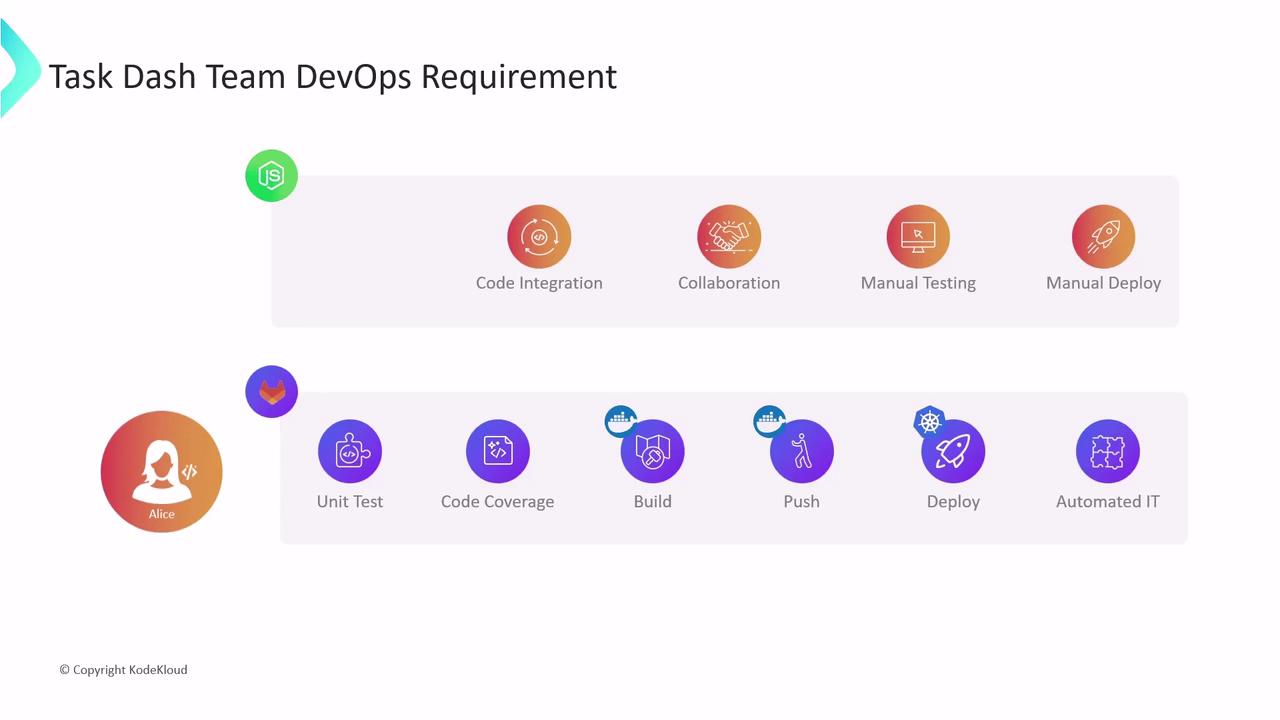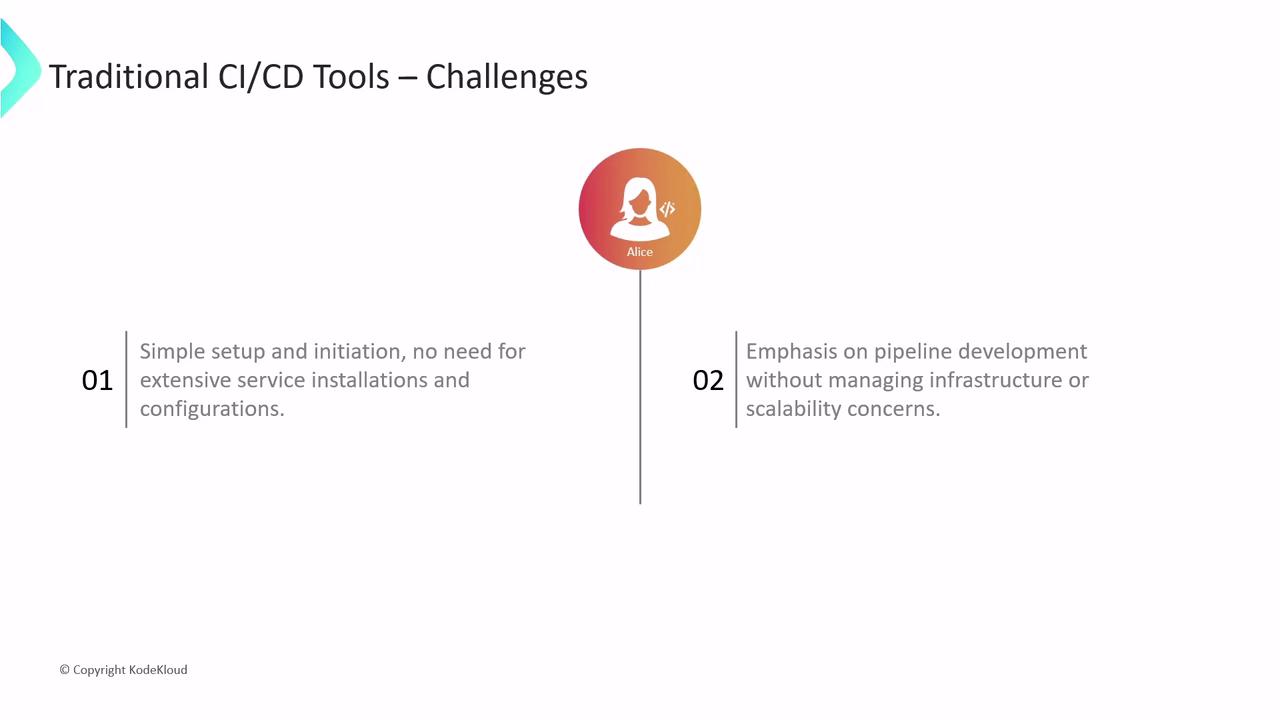GitLab CI/CD: Architecting, Deploying, and Optimizing Pipelines
Introduction
Problem Statement Meeting with XYZ Team
In this article, we’ll explore the key DevOps prerequisites for a software provider and demonstrate how GitLab CI/CD can address these requirements with a streamlined, scalable workflow.
Dasher Technology offers a platform that connects data, applications, and devices across on-premises environments. Their R&D team is investigating a cloud migration and container strategy—starting with a Node.js project and later extending to Java and Python applications.
Alice leads the new DevOps team tasked with building the CI/CD pipeline from the ground up. Their multi-cloud architecture will use Docker for containerization and Kubernetes for orchestration.
Alice’s initial assessment uncovered several pain points:
- No version control or branch management
- Manual code integration and testing
- Slow, unreliable test runs with low coverage
- Infrequent merges that elevate release risk
- Manual deployments to development, staging, and production
To overcome these challenges, the team will implement a CI/CD pipeline consisting of:
- Version control and collaboration on GitLab
- Automated unit tests with code coverage
- Docker image builds and registry pushes
- Deployment to Kubernetes clusters
- Automated integration tests before production rollout

Evaluating CI/CD Tools
The team evaluated several popular CI/CD platforms:
| Tool | Pros | Cons |
|---|---|---|
| Jenkins | Highly extensible, large plugin ecosystem | Complex setup, infrastructure management |
| GitLab CI/CD | Integrated with GitLab, auto-scaling runners | Fewer community plugins compared to Jenkins |
| Travis CI | Simple YAML-based configuration | Limited concurrency, slower enterprise tier |
| CircleCI | Fast container performance, Docker support | Usage limits on free tier |
| GitHub Actions | Native to GitHub, rich marketplace | Requires GitHub ecosystem |
| Spinnaker | Advanced deployment strategies | Steep learning curve |
| Bamboo | Tight Atlassian integration | Licensing costs, less community-driven |
Alice initially chose Jenkins due to its maturity and active community. However, setting up and maintaining a Jenkins server for a single Node.js project proved time-consuming:
- Provision virtual machines with sufficient CPU, memory, and disk
- Install Java JDK, Jenkins, and required plugins
- Configure firewall rules and security groups
- Install and manage multiple Node.js versions and npm
- Install Docker for container builds
- Add Kubernetes tooling:
kubectl, Helm - Integrate external testing/reporting CLIs
Extending this setup for Java or Python on AWS/Azure adds layers of complexity:
- Java: Maven or Gradle
- Python: virtualenv, pip
- Cloud CLIs: AWS CLI, Azure CLI
- DevSecOps: vulnerability scanners like Trivy and KubeSec
![]()
Note
Managing your own CI/CD infrastructure means spending more time on setup and maintenance rather than on writing pipelines.
Because many team members are new to this tool ecosystem, Alice needed a solution that would:
- Require minimal infrastructure setup
- Let the team focus on pipeline authoring
- Provide built-in scalability and security

After evaluating multiple platforms, Alice selected GitLab CI/CD. In the following sections, we’ll build and optimize a GitLab CI/CD pipeline for a real-world Node.js application—covering:
- Version control and merge request workflows
- Automated testing and code coverage
- Docker image creation and registry hosting
- Kubernetes deployments and rollbacks
- Integration testing and monitoring
Let’s get started!
Links and References
- GitLab CI/CD Documentation
- Docker Official Site
- Kubernetes Documentation
- Node.js Homepage
- Java SE Downloads
- Python.org
Watch Video
Watch video content